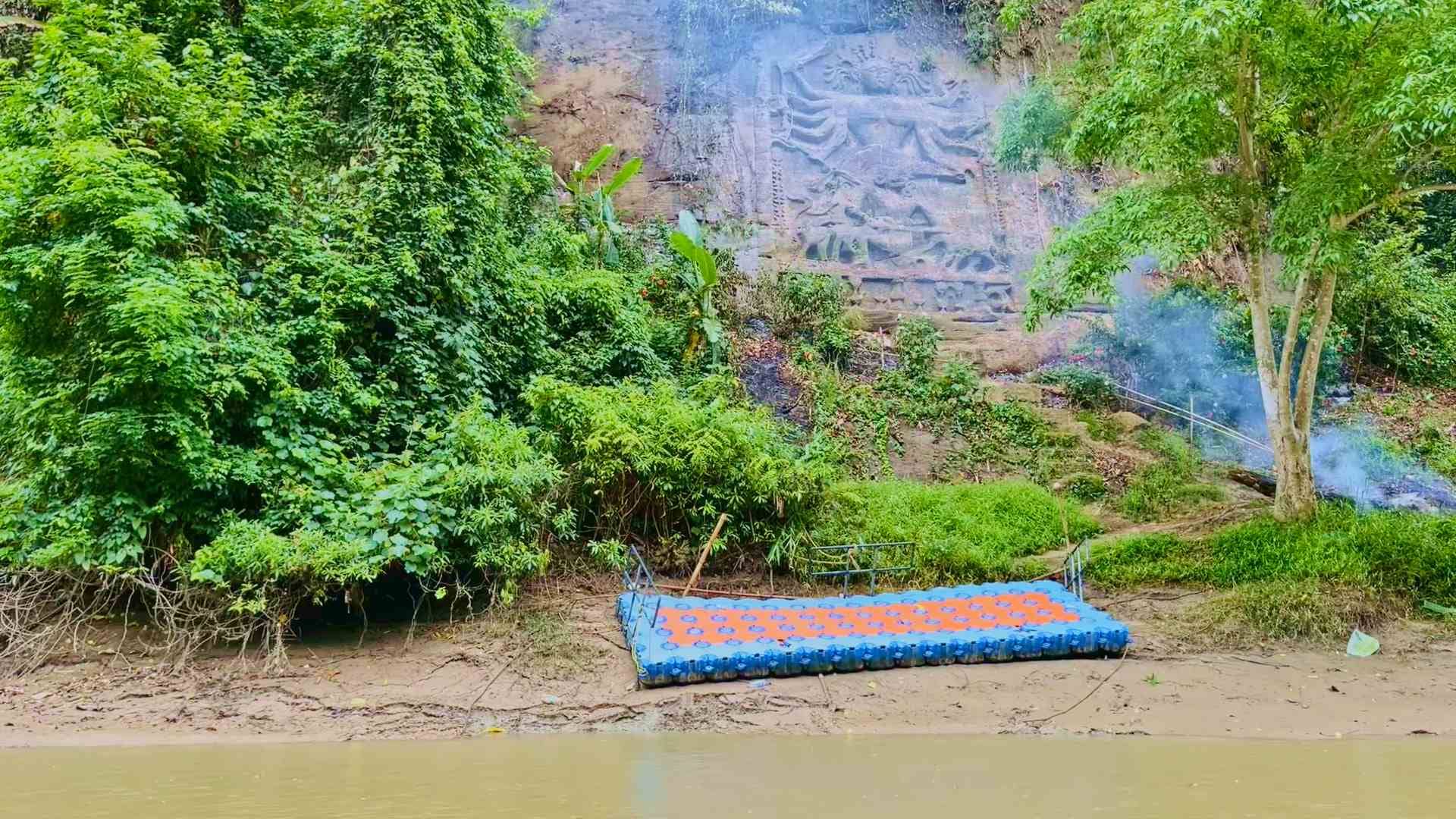
Chabimura, the one-of-its-kind archeological site that features ancient carvings of Hindu gods and goddess. There are no such places that showcases such a blend of history, spirituality, nature, and craftsmanship.
It’s not much visited due to its remote location, but that’s what preserves the place very-well. However, it has everything to make your day and have a fulfilling trip to Tripura.
Today, I am going to tell you everything about Chabimura with my personal experience and explain why it’s worth visiting it.
How to Reach Chabimura, Tripura?
First, you have to reach Agartala. There’s no other major city from where it can be reached.
Agartala is well-connected with trains, buses, and flights.
There are direct flights and trains from the major city: Delhi, Guwahati, and Kolkata. Besides that, if you are living in nearby states, you can reach here by semi sleeper bus as well.
It takes around 16 hours from Guwahati to reach Agartala.
There are two ways to reach Chabimura:
- You can rent a two-wheeler or Taxi from Agartala. From there, Chabimura is 85 km away. You can directly drive there or take a route via Rudgrasagar Lake. There, you can visit Neermahal Palace first and then go to Chabimura. In this case, the total distance will be 106 km.
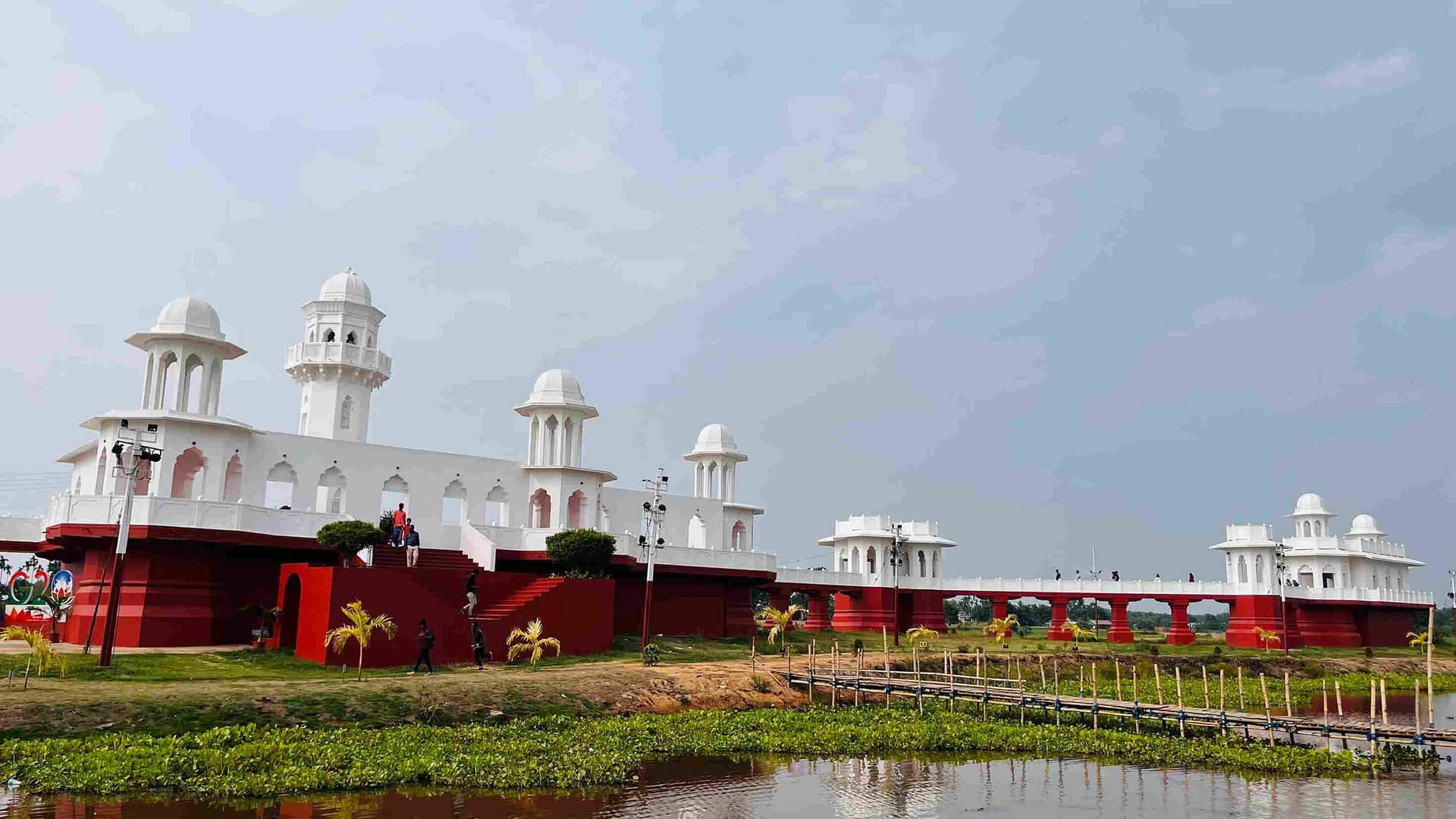
- Another option is to skip Neermahal and take a train from Agartala railway station and get down at Udaipur. However, there’s only one train from Agartala to Udaipur that boards at 1:40 PM and reach Udaipur at 2:30 PM. From Udaipur, you can rent a two-wheeler or taxi to reach Chabimura. It is just 30 km away from there.
Road from Agartala to Chabimura
The road condition from Agartala to Chabimura is great. However, from Udaipur, it’s a two lane till Amarpur and terrain is hilly. Overall, comfortable for most riders. From Amarpur, you have to go forward on a one-lane road amidst farmlands and have to drive over a narrow suspension bridge over the Gomti River. I was bit scared, but it was quite fun when I crossed it.
Best Time to Visit Chabimura, Tripura
Tripura has a hot and humid climate. However, during the winter season, the temperature drops a bit and someday you can see fog in Chabimura, around the Gomti River. Therefore, I’d suggest visiting the place between November to February. During this period Chabimura Festival also takes place, which is a must visit.
Chabimura Festival
Chabimura Festival usually takes place around the second week of January (around 13 Jan – 15 Jan). During this festival, the entry point is decorated with flowers, banners, and scrolls.
Ethnic groups of Tripura take part in it and do dance and cultural performances. Sometimes, cultural troops from nearby states also take part.
Many stalls are setup showcasing Tripura’s culture and different tourist sites.
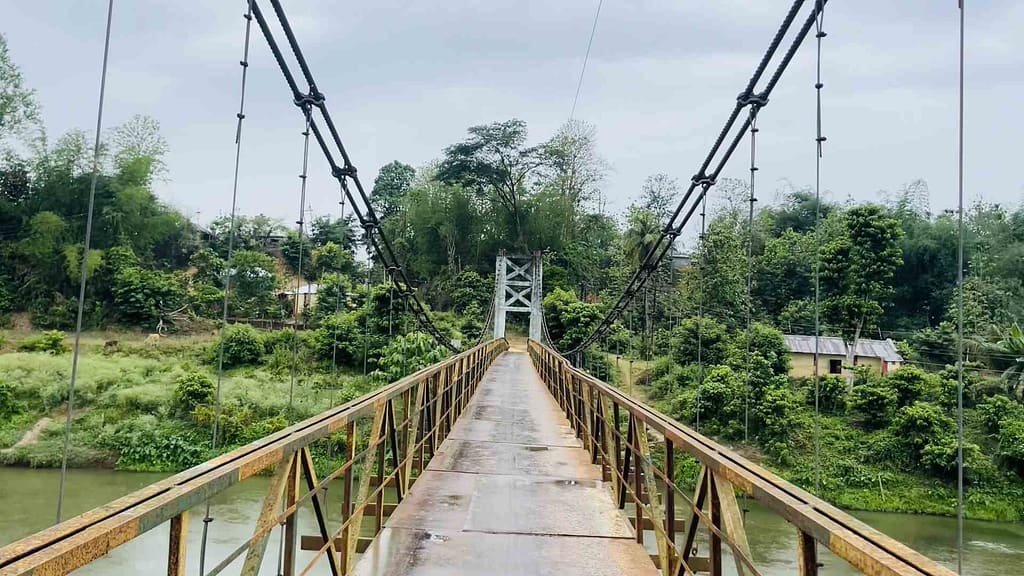
Complete History of Chabimura
Very lesser is known about the Chabimura’s history. However, there is a widely accepted fact that the rock carvings of Hindu gods and goddesses were created in the 15th century.
Some scholars also compare the carvings with one found in Ujan Bazaar in Guwahati, which belong to pre- Ahom period. Some also mentions the influence of Islam arts due to presence of more sanctified work.
Chabimura Folklore
When I reached Chabimura quite early and while waiting for the other tourists to join me on the boat, a local person told me about Chabimura’s folklore.
Jamatia Ruler, Chichinfa was a wealthy king of Devtamura hills. He gathered all his treasure and hid it deep down in a cave amidst the dense forest. It is said that the treasure is guarded by a large python, and whoever tries to get inside the cave and still the treasure will have to face the python.
Besides that, it is also protected by the local goddess Chakrak Ma and if someone achieves to take away they treasure, they will face her wrath.
Well, we will visit this cave during our trip as well.
Things to do in Chabimura
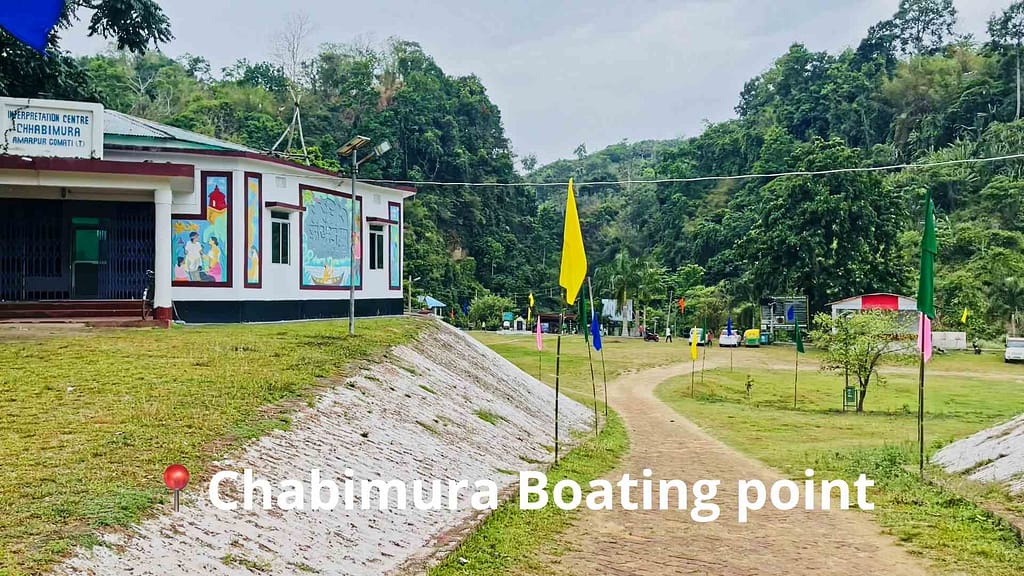
I reached Chabimura around 9:30 am, which was quite early as the boating starts at 10:00. There weren’t any tourists and only locals who were sitting and chatting.
I asked for the boat price, which was Rs 150 ($2)/ per person when the boat is full. However, if there’s no other tourist and you hire the entire boat, you have to pay Rs 1500 ($20).
Therefore, I decided to wait for other tourists to save the money. At 11:00 am two couples arrived, and we all shared the boat. Then, the total amount got divided between five people and I only had to pay Rs 300 ($4).
Boat Ride to Carving Sites
It’s better to get a front seat on the boat for the best views of the carvings. Though the water appeared deep, it’s quite shallow because of which the boat is moving forward slowly.
Usually, it takes around one hour to reach the final carving. However, the captain told us that it will take 90 minutes due to shallow water.
Well, I won’t mind a longer ride as the road ride is loaded with amazing views. The Gomti river flows cutting through the Devtamura hills, covered with lush green forest, providing the best experience. And now I know why they are called Amazon of Tripura.
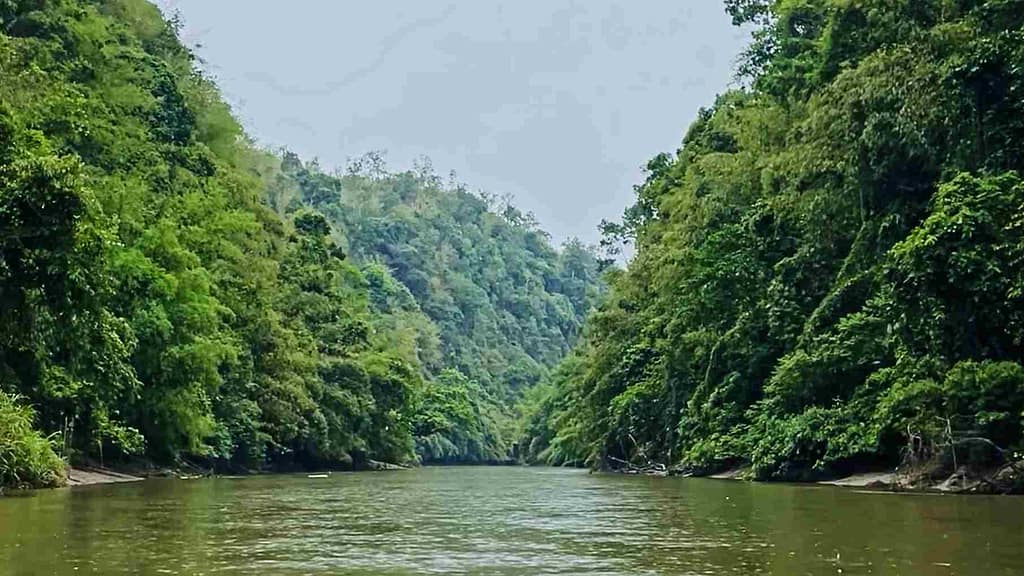
While moving forward, the boat passed through the first figure on the right side. The carving that we pass through is of lord Vishnu sitting over a lotus. A litter further, there was a carving of lord Ganesha.
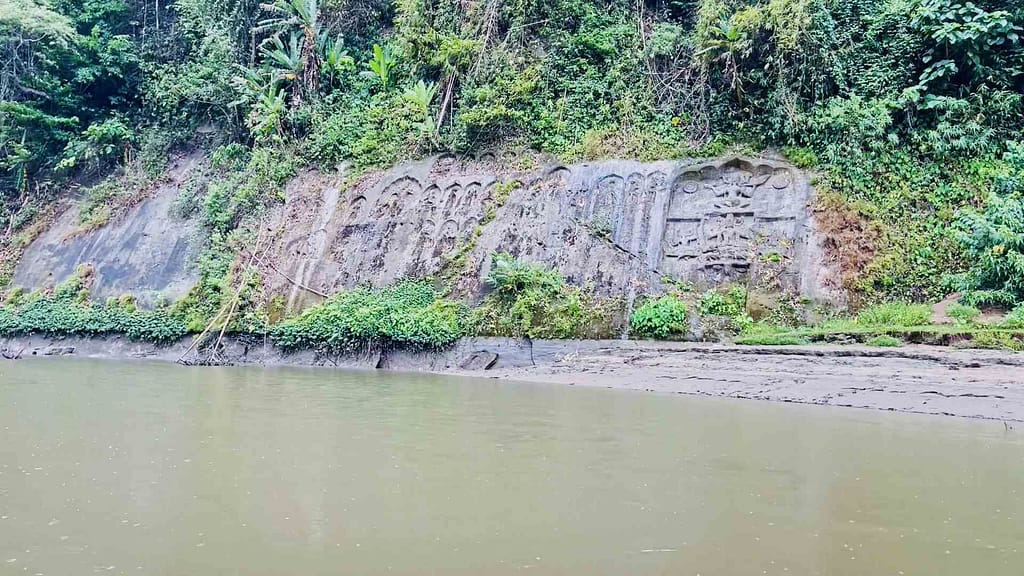
As you make our way forward through Gomti river, you’ll notice various carvings on both sides of the river, some large, some small, some are maintained property, whereas some are absorbed by the nature. There’s a good chance there are still many that haven’t been discovered yet. The ones that have been found include stunning carvings of Vishnu, Shiva, Kartikeya, and the most impressive one of all—Maa Durga (Chakrak Ma), which we’ll be visiting at the end of our journey.
Chakrak Ma’s Rock Carving
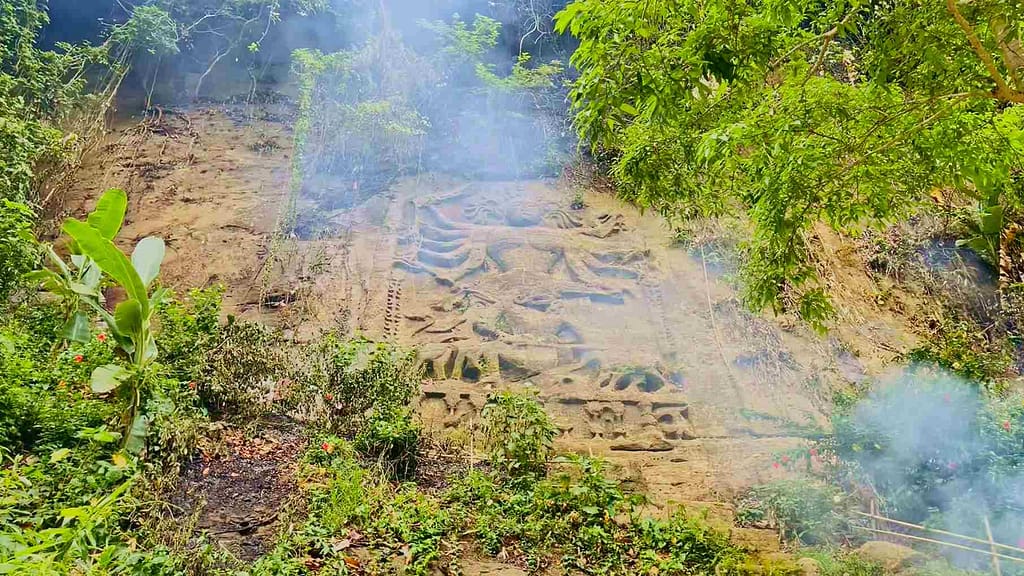
The magnificent marvel of mankind, Chabimura’s Chakrak Ma Rock Carving, unfolds itself in the end of the ride. This 11 meters long and 8 meters wide carving is one of its kind in India. The carving is in Mahishasurmardini avatar, having 10 arms with holding weapons in 9 and holding the head of a demon in the 10th one.
We stayed here for a while to absorb the beauty of this carving. Nobody knows who the artist behind these is, but whoever did this wanted to keep the indigenous culture alive. These carving were hidden for 100s of decades and were uncovered by archeologists in the last century.
After visiting the carving, we took a U-turn to reach the cave, which I mentioned earlier.
Trek to the Sacred Road
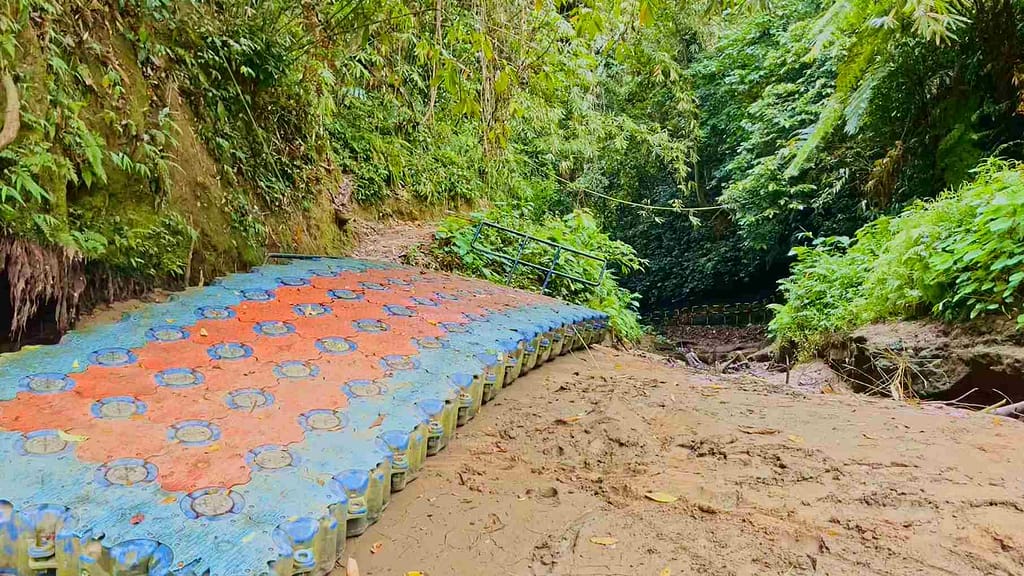
Our boat halt at the path going deep down in the jungle. There were some fishermen and locals nearby. The boat’s captain guided us to follow the path to reach the sacred cave.
The cave is only 200 meters far from the shore, but it almost took me 15 minutes to reach there as the path was slippery. A few years back, there was no path to walk on. You have to trek over the slick mud to reach the cave, which was dangerous.
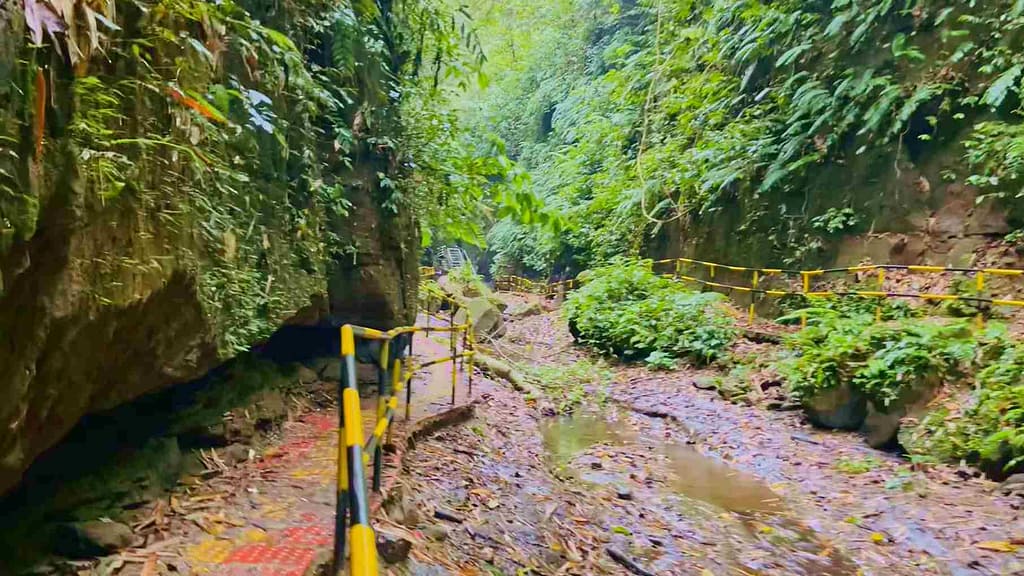
While going forward, we also crossed a shiv temple on our way, signifying the religious importance of the place.
After that, there were some stairs that I have to climb. There’s just a narrow path on the side of the slippery area. Still, there’s no going forward without good trekking shoes. The stairs are built over a waterfall and you can hear its voice while you climb up.
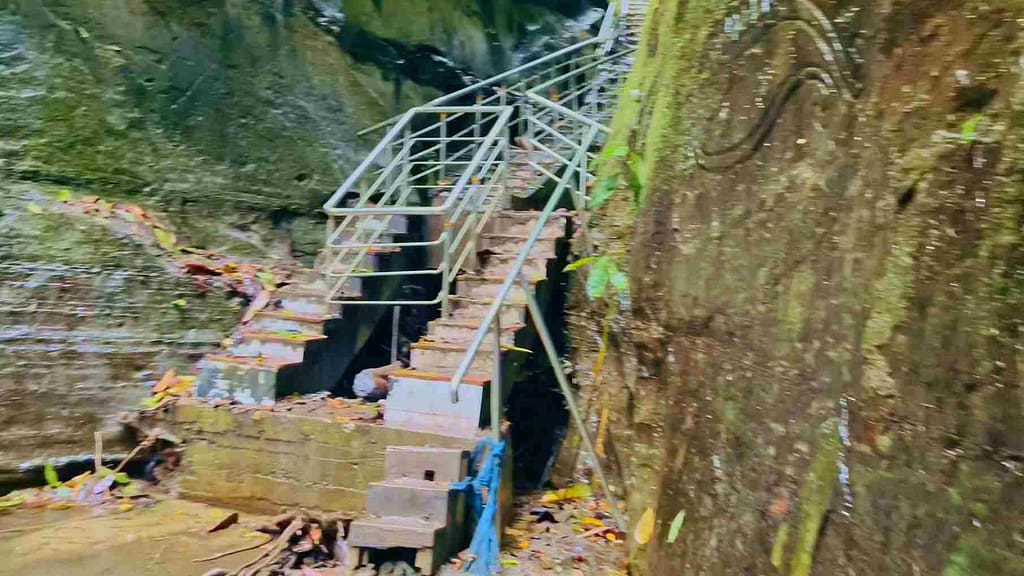
After climbing the stairs, it’s just a two minutes walk and you will reach at the end of the path and the starting of the cave.
I did go inside the cave, but I don’t recommend it to others as there are snakes, scorpions, spiders, and several other bugs that can cause harm. When I went inside the cave, there were two paths. I took the left one and as I moved forward it became narrower, wetter, and pitch dark. Therefore, I had no option to drop off the idea and return. Then, I just clicked the photographs and returned back to the boat.
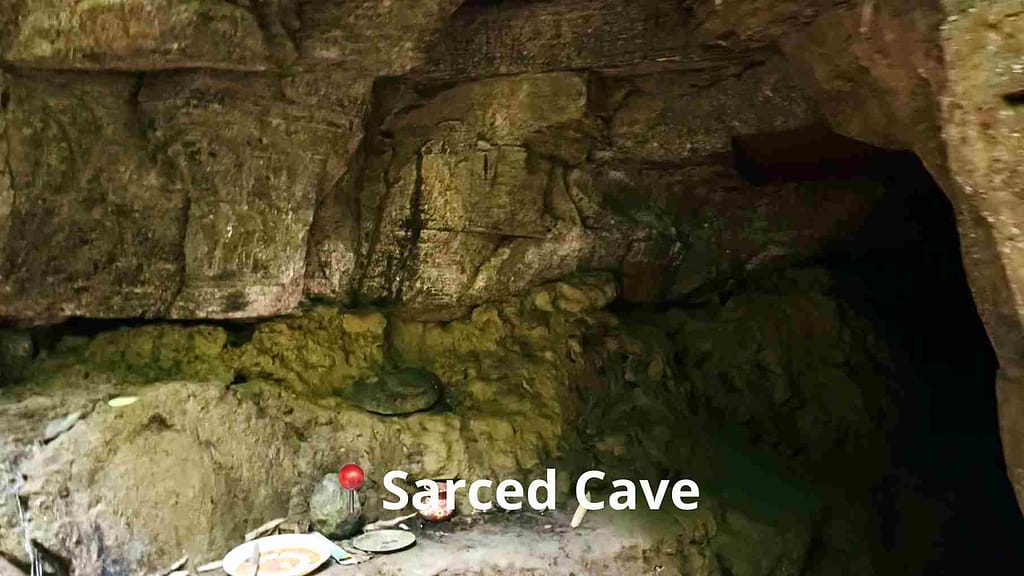
Fishing with Jamatia People
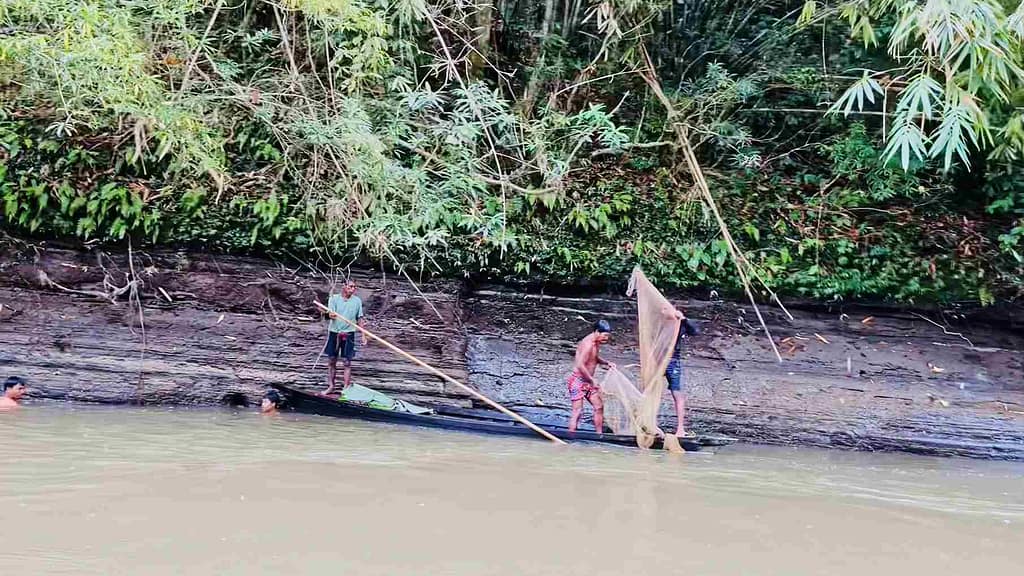
There are lot of Jamatia people fishing in and around Gomti river. This is the primary occupation of the tribe and helps them feed the family. You can see them fishing in and around the river.
You can request some of the locals to join them in their fishing boats. Then, you can see and learn how to use nets and hooked sticks for fishing. I never tried this before and it’s an exceptional experience to bond with locals and do these activities.
Life in Gomti isn’t easy as their villages are still isolated. However, the people here still know how to cherish life and enjoy.
Camping on Gomti River’s Shore
If you want to do camping and stay the night here, it’s possible as the entry point remains open all the time. You just have to find a nice, dry ground to place your tent.
It’s worth staying here, especially during full moon when you can see Gomti river reflecting the moonlight and sparkling. There are public facilities available and hotel where you can get basic food items too.
Places to Stay Near Chabimura
Government is currently building a guesthouse at Chabimura entry point. However, you can either stay in Amarpur or Udaipur for the night.
Here are the recommended places:
Amarpur
Udaipur
- Airbnb Stay
- Gunabati Yatri Niwas: 03821267939
- OYO Hotel Southern Plaza: 01246201186
Where to go Next?
After Chabimura, you have plenty of options. The one that I find the best is going forward to Dumboor lake, which is one of the largest lakes in Tripura. You can enjoy boating, camping, and bird watching at the lake. Besides that, there are multiple islands in the lake too, where you can visit and enjoy the escape.
Other than that, you can come back to Udaipur and visit Tripura Sundari if didn’t visit it while going for Chabimura. Then, you can go south and explore Pilak archeological site and museum and Maha Muni Buddha Monastery.
And if you have enough time, why don’t visit both the side?
My Experience with Chabimura
I consider myself grateful that I was able to visit such a manmade marvel. Though I visited the place in May, it was even better for me due to unexpected rainy weather. The road to Chabimura, especially from Udaipur, is an expectational experience.
Chabimura itself has everything for the perfect trip. It allows you to experience close encounter with nature during the boat ride, a glimpse into history while viewing the rock carvings, and adventure during the trek to the cave.
If you are visiting Tripura, Chabimura should not be missed.
Frequently Asked Questions About Chabimura, Tripura
Where is Chabimura situated?
Chabimura is situated in the Gomti District. The site is 85 km away from Agartala and 30 km away from Udaipur, Tripura.
How far is Chabimura from Agartala?
Chabimura is 85 km away from Agartala.
How far is Chabimura from Udaipur, Tripura?
Chabimura is 30 km away from Udaipur, Tripura.
How much is the boat ride cost in Chabimura?
The boat ride costs Rs 150 ($2) per person but if you hire the entire boat, it costs $1500 ($20) per person.
Why is Chabimura famous?
Chabimura is famous of its ancient rock carvings of Hindu gods and goddesses. The most important ones are of Vishnu, Shiva, Kartikey, and Ma Durga (Chakrak Ma).
Which railway station is near Chabimura?
Udaipur, Tripura railway station is the nearest one from Chabimura, which is 30 km away.
What is another name for Chabimura?
Chabimura is also called Devtamura.